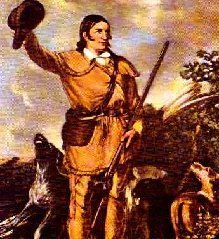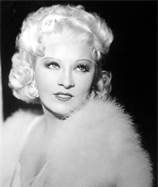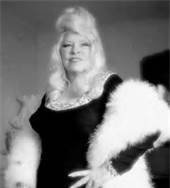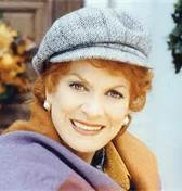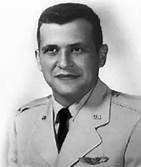Day was born Doris Mary Kappelhoff on April 3, 1922, in Cincinnati, Ohio, the daughter of Alma Sophia (née Welz; 1895–1976) and William Joseph Kappelhoff (1892–1967). Her mother was a homemaker, and her father was a music teacher and choirmaster. Doris was named after actress Doris Kenyon. Her maternal and paternal grandparents were German; her paternal grandfather Franz Joseph Wilhelm Kappelhoff immigrated to the United States in 1875 and settled in Cincinnati which had a large German community with its own churches, clubs, and German-language newspapers. For most of her life, Day stated she was born in 1924; it was not until her 95th birthday – when the Associated Press found her birth certificate, showing a 1922 date of birth – that she stated otherwise.
The youngest of three siblings, she had two older brothers: Richard (1917–1919), who died before her birth, and Paul (1919–1957). Due to her father's infidelity, her parents separated. She developed an early interest in dance, and in the mid-1930s formed a dance duo with Jerry Doherty that performed in competitions throughout the United States. On October 13, 1937, while riding with friends, the car Day was in collided with a freight train, breaking her right leg and curtailing her prospects as a professional dancer.
Early career (1938–1947)
While recovering from her car accident, Kappelhoff started to sing along with the radio and discovered a talent she did not know she had. "During this long, boring period, I used to while away a lot of time listening to the radio, sometimes singing along with the likes of Benny Goodman, Duke Ellington, Tommy Dorsey, and Glenn Miller", she told A. E. Hotchner, one of Day's biographers. "But the one radio voice I listened to above others belonged to Ella Fitzgerald. There was a quality to her voice that fascinated me, and I'd sing along with her, trying to catch the subtle ways she shaded her voice, the casual yet clean way she sang the words."
During the eight months she was taking singing lessons, Kappelhoff had her first professional jobs as a vocalist, on the WLW radio program Carlin's Carnival, and in a local restaurant, Charlie Yee's Shanghai Inn. During her radio performances, she first caught the attention of Barney Rapp, who was looking for a female vocalist and asked if she would like to audition for the job. According to Rapp, he had auditioned about 200 singers when Kappelhoff got the job.
While working for Rapp in 1939, at his suggestion she adopted the stage name "Doris Day". Rapp felt that "Kappelhoff" was too long for marquees, and he admired her rendition of the song "Day After Day". After working with Rapp, Day worked with bandleaders Jimmy James, Bob Crosby, and Les Brown. In 1941, Day appeared as a singer in three Soundies with the Les Brown band.
While singing with the Les Brown band and for nearly two years on Bob Hope's weekly radio program, she toured extensively across the United States.
Having become primarily recognized as a musical-comedy actress, Day gradually took on more dramatic roles to broaden her range. Her dramatic star turn as singer Ruth Etting in Love Me or Leave Me (1955), with top billing above James Cagney, received critical and commercial success, becoming Day's biggest hit thus far. Cagney said she had "the ability to project the simple, direct statement of a simple, direct idea without cluttering it", comparing her to Laurette Taylor's Broadway performance in The Glass Menagerie (1945), one of the greatest performances by an American actor. Day said it was her best film performance. Producer Joe Pasternak said, "I was stunned that Doris did not get an Oscar nomination." The soundtrack album from that movie was a No. 1 hit.
Day starred in Alfred Hitchcock's suspense film The Man Who Knew Too Much (1956 film) oposite James Stewart. She sang two songs in the film, "Que Sera, Sera (Whatever Will Be, Will Be)" which won an Academy Award for Best Original Song, and "We'll Love Again". The film was Day's 10th movie to be in the Top 10 at the box office. Day played the title role in the thriller/noir Julie (also 1956) with Louis Jourdan.
In 1959, Day entered her most successful phase as a film actress with a series of romantic comedies. This success began with Pillow Talk (1959), co-starring Rock Hudson who became a lifelong friend, and Tony Randall. Day received a nomination for an Academy Award for Best Actress. It was the only Oscar nomination she received in her career. Day, Hudson, and Randall made two more films together, Lover Come Back (1961) and Send Me No Flowers (1964).
Along with David Niven and Janis Paige, Day starred in Please Don't Eat the Daisies (1960) and with Cary Grant in the comedy That Touch of Mink (1962). During 1960 and the 1962 to 1964 period, she ranked number one at the box office, the second woman to be number one four times, an accomplishment equalled by no other actress except Shirley Temple. She set a record that has yet to be equaled, receiving seven consecutive Laurel Awards as the top female box office star.
After her third husband Martin Melcher died on April 20, 1968, a shocked Day discovered that Melcher and his business partner and "adviser" Jerome Bernard Rosenthal had squandered her earnings, leaving her deeply in debt. Rosenthal had been her attorney since 1949, when he represented her in her uncontested divorce action against her second husband, saxophonist George W. Weidler. Day filed suit against Rosenthal in February 1969, won a successful decision in 1974, but did not receive compensation until a settlement in 1979.
Day also learned to her displeasure that Melcher had committed her to a television series, which became The Doris Day Show.
- 1/2 cup sugar
- 1 teaspoon ground cinnamon
- 8 eggs
- 2 1/2 cups half-and-half
- 1 tablespoon vanilla extract
- 1/2 teaspoon salt
- 1 loaf French bread, cut into 2-inch cubes
- 3 bananas, sliced
- 4 slices cooked bacon, crumbled
- 1 cup peanut butter
- Preheat oven to 400º. Coat a 9- x 13-inch baking dish with cooking spray.
- In a small bowl, combine sugar and cinnamon, set aside. (This will prevent the cinnamon from floating when combined with the egg mixture.) In a large bowl, combine eggs, half and half, vanilla, salt and the cinnamon-sugar mixture; beat until well combined. Add bread cubes and banana slices; toss until coated.
- Chill 15 minutes then remove bread mixture from refrigerator, toss again, and chill an additional 15 minutes. Pour into baking dish.
- Bake 40 to 45 minutes or until the mixture is set and the top is golden. Remove from oven, sprinkle with crumbled bacon, and place back in oven 5 minutes.
- Meanwhile, in a microwave-safe bowl, warm peanut butter 15 seconds. Stir until smooth and pourable. If necessary, continue to microwave in 10 second intervals until desired consistency. (Make sure you don’t over heat it.) Immediately spoon over the French toast bake and serve.
2008 – American swimmer Michael Phelps becomes the first person to win eight gold medals in one Olympic Games.
And births this date include...
1960 – Sean Penn, American actor and director










